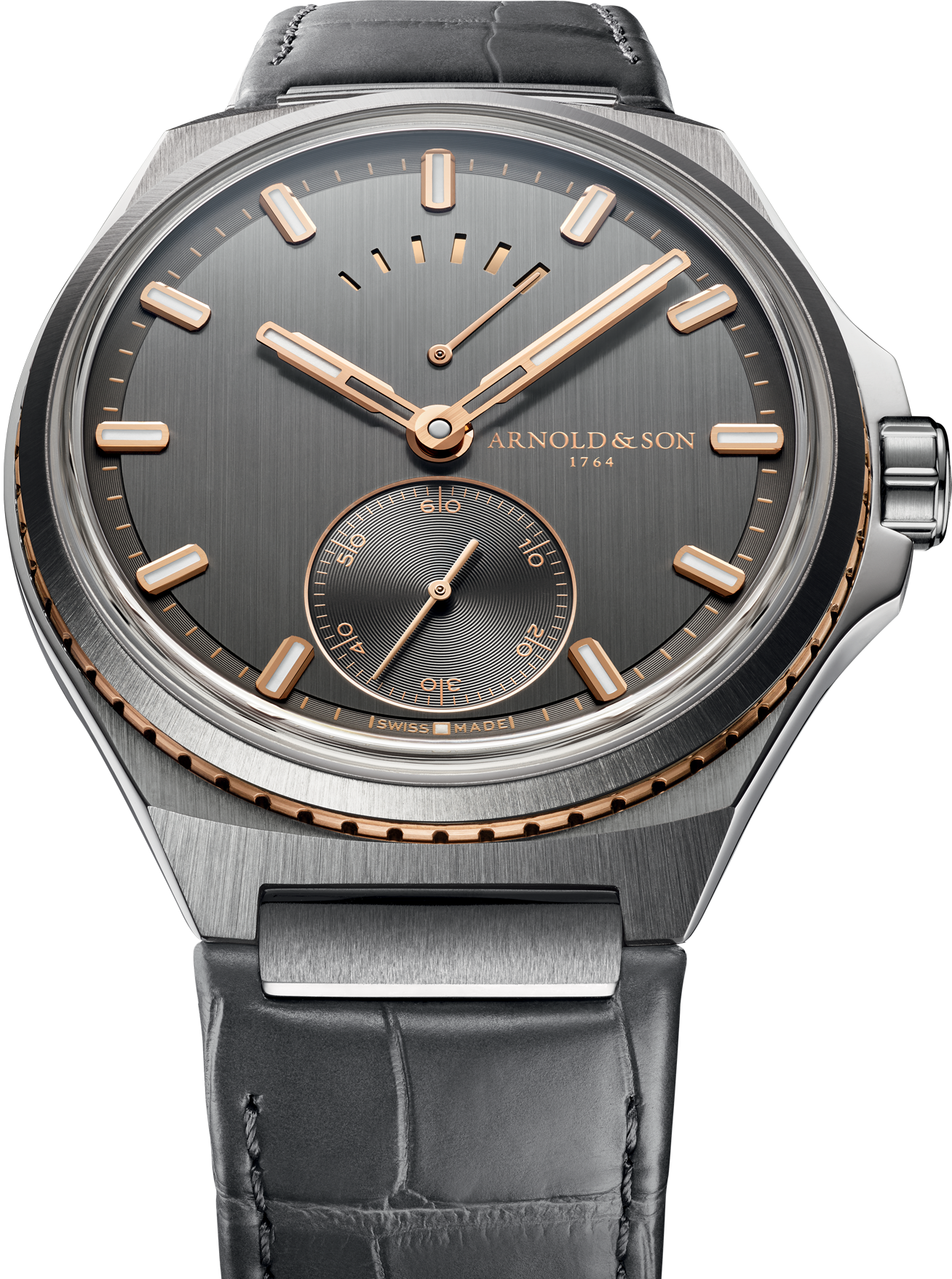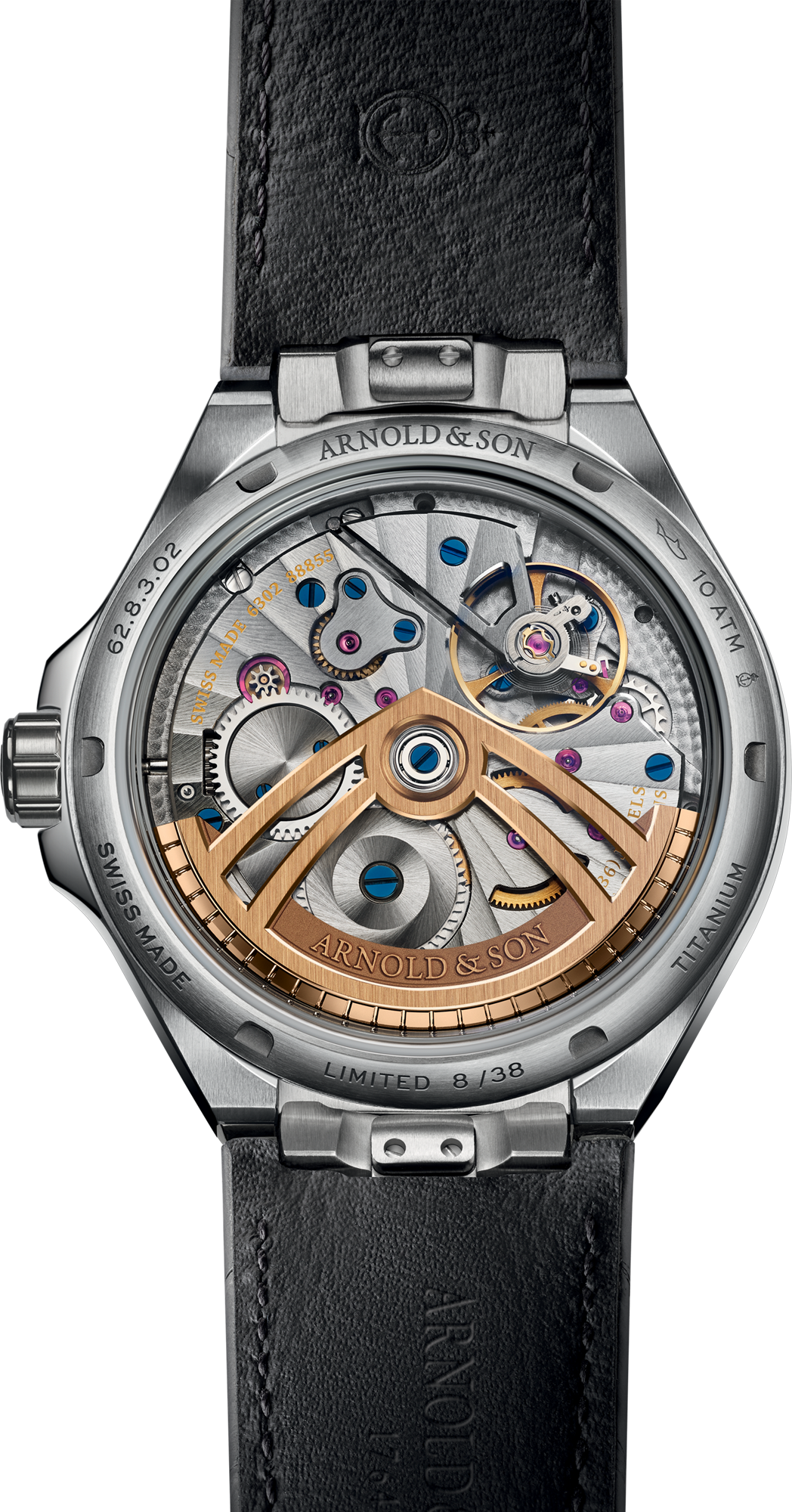
Last land before the open sea
This piece, issued in a strictly limited edition of just 38, is driven by an in-house automatic calibre certified as a chronometer by the COSC. It features a power-reserve indicator and a large seconds counter on the Lizard Point Grey dial. This shade evokes the colours of the ocean as seen from Lizard Point, the southern-most tip of mainland Great Britain, situated at 5° longitude west and almost 50° latitude north.
Technical Specifications
Functions
Movement
- Calibre:
- A&S6302 (view calibre)
- Jewels:
- 36
- Diameter:
- 33.00 mm
- Thickness:
- 6.65 mm
- Power reserve:
- 60 hours
- Frequency:
- 4 Hz / 28,800 vph
Dial
Golden finish hour markers and hands, coated with Super-LumiNova
Case
- Material:
- titanium, bezel ring in 18-carat red gold (5N)
- Diameter:
- 42.5 mm
- Thickness:
- 12.25 mm
- Crystal:
- domed sapphire, with an anti-reflective coating on both sides
- Back:
- sapphire crystal, with an anti-reflecting coating
- Water resistance:
- 10 bar (100 metres/330 feet)
Strap
- Material:
- titanium bracelet / additional anthracite grey alligator leather strap
- Buckle:
- folding clasp / pin buckle
Interested in this watch?
Gallery
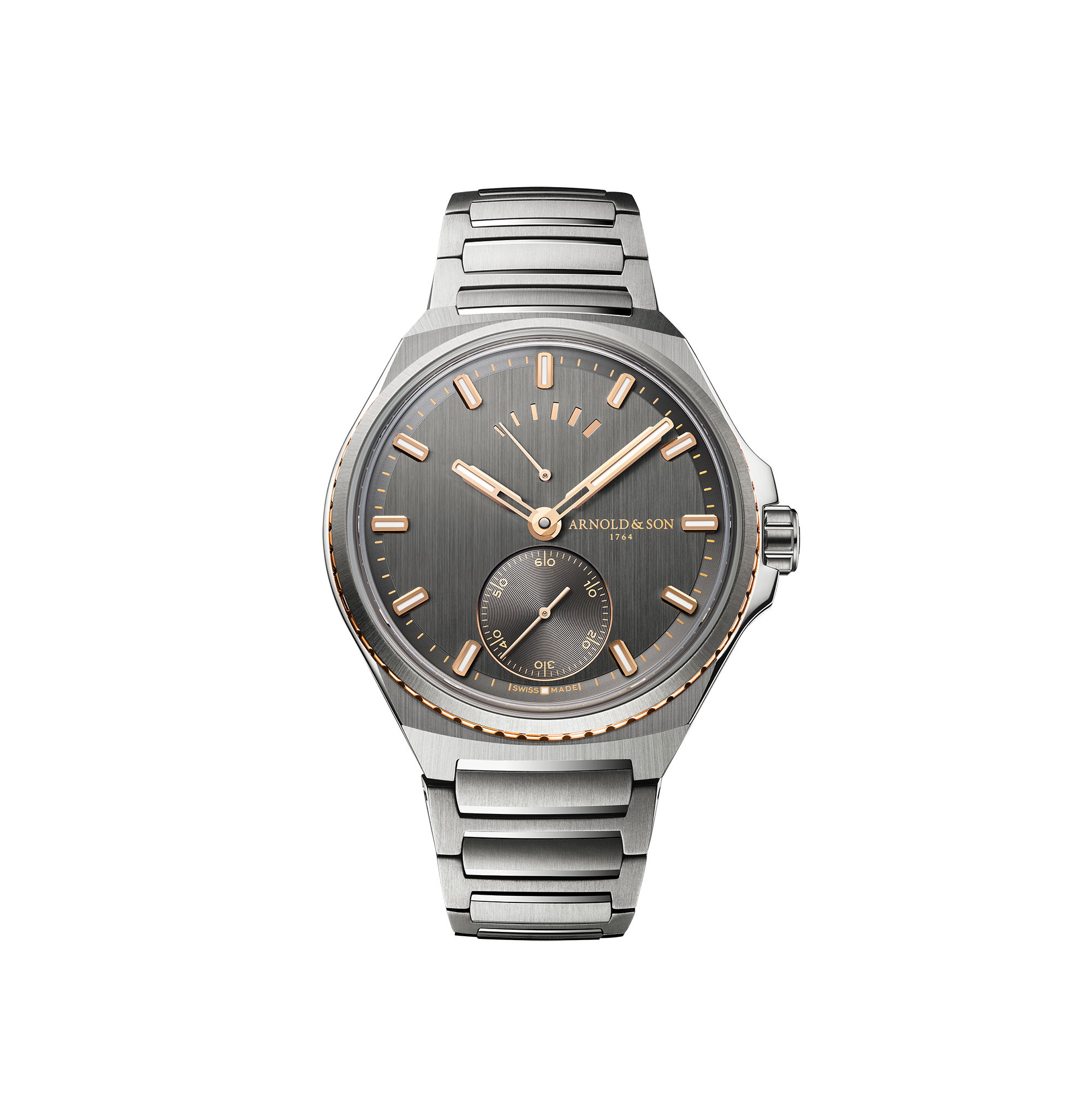
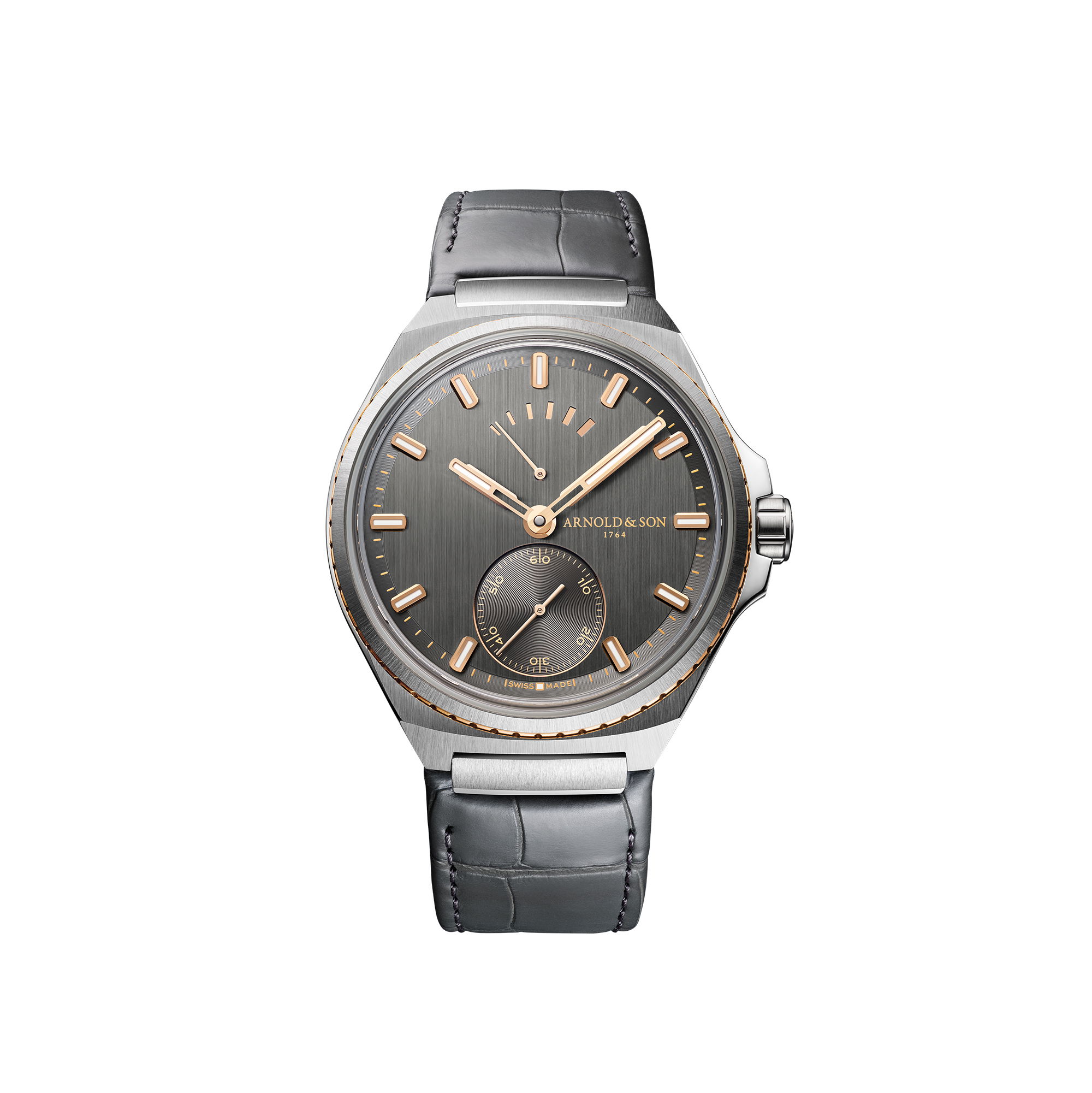
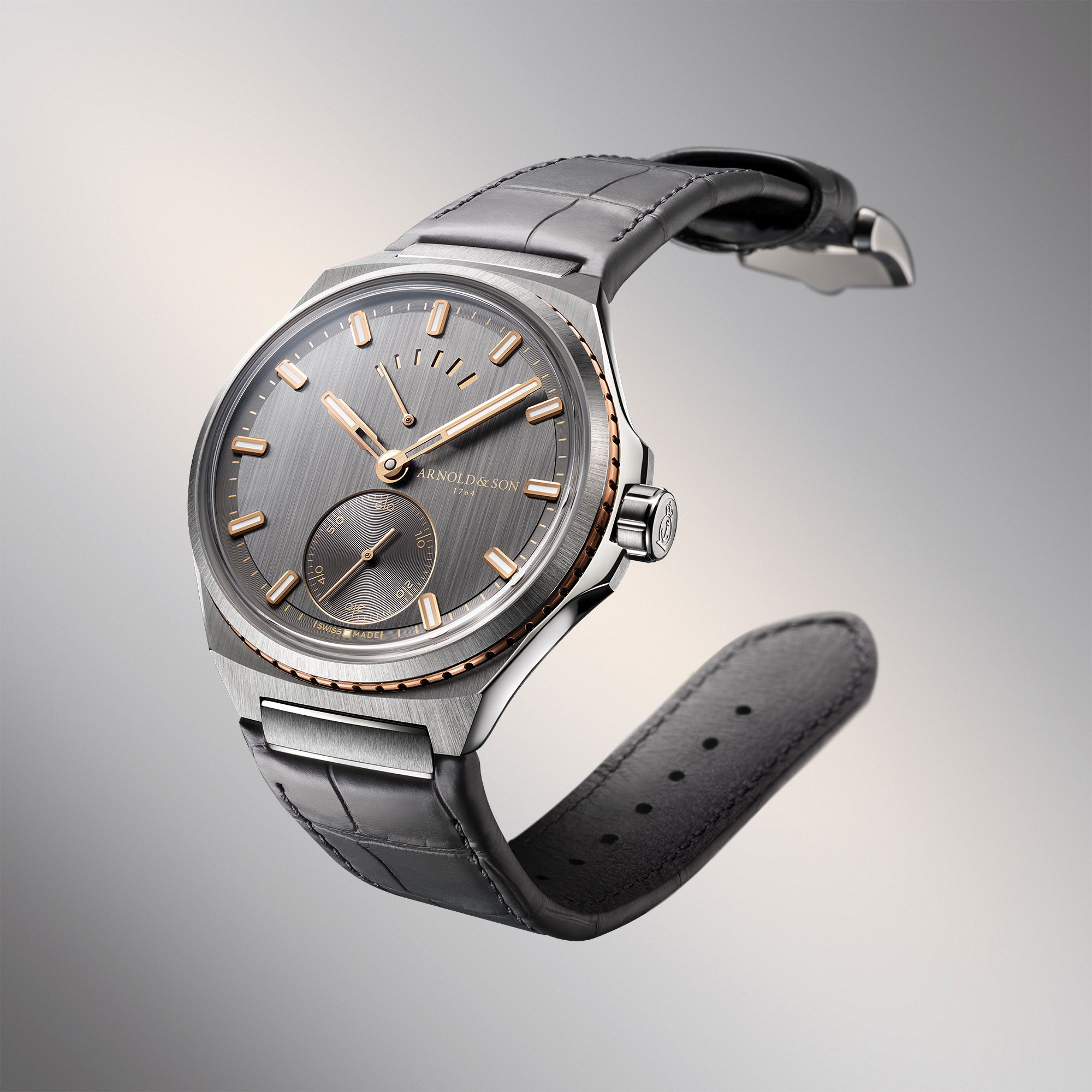
The coordinates of a legendary cape
Long-distance sailors speak of the legends of Cape Horn and its mighty waves. Others tell of the Cape of Good Hope which, at the tip of Africa, looks out onto the boundless oceans. Closer to home, English sailors are stirred by Lizard Point in Cornwall. This last stretch of land at the southern tip of Great Britain – nautical coordinates 49° 57′ 32″ north by 5° 12′ 23″ west – is not just the gateway to the trade winds of the southern seas, but also a place feared by sailors, who know it points towards the Isles of Scilly, a scattering of islets where, on 22 October 1707, an English fleet was wrecked due to a lack of precise navigational instruments. To avoid a repeat of this tragedy, in 1714 the British admiralty offered a prize of £20,000 to the first person to solve the challenging problem of calculating longitude at sea. As a homage to the iconic Lizard Point, located in the region where John Arnold was born, Arnold & Son present the Longitude 5°W watch in a limited edition of just 38.
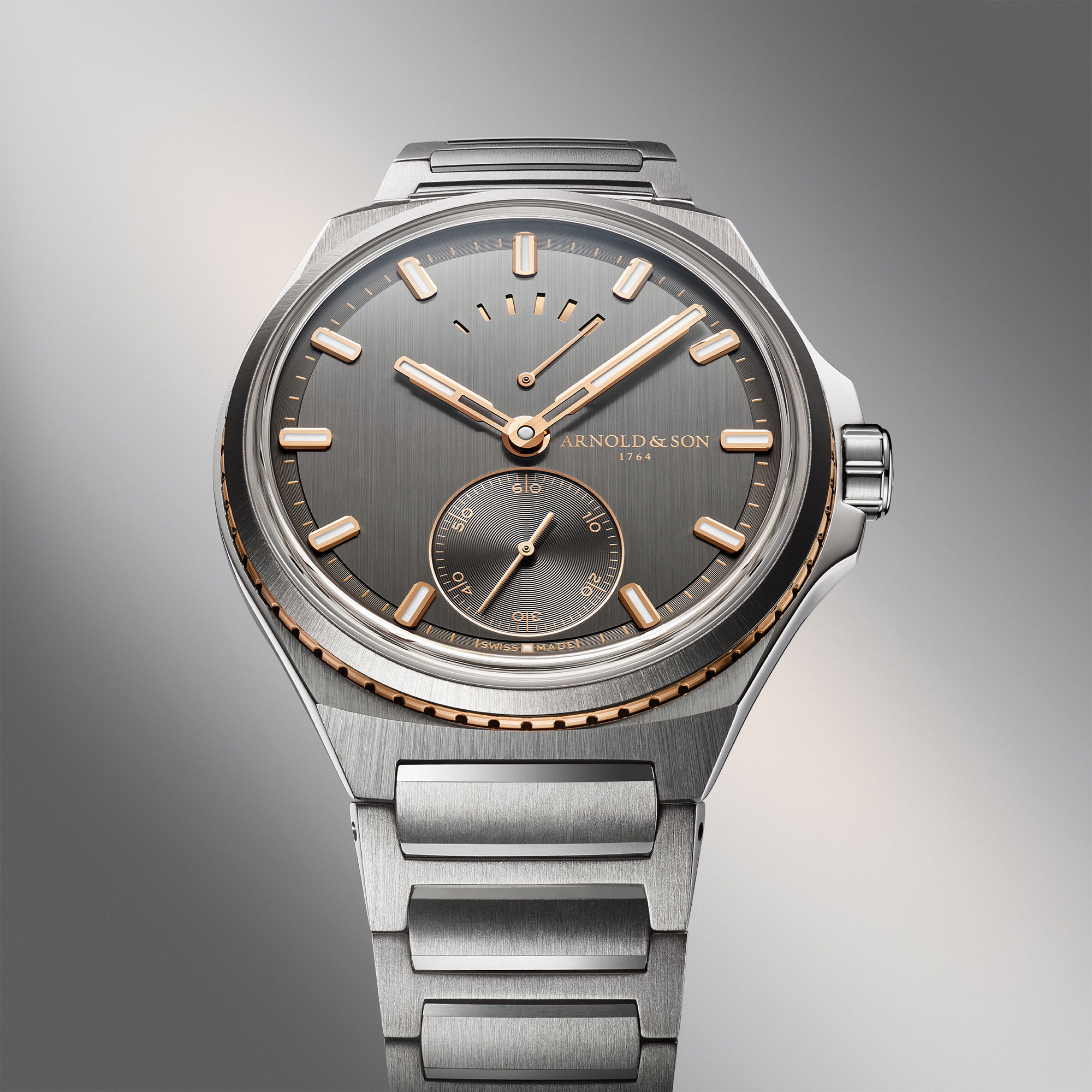
Inspired by John Arnold’s chronometers
True to the stylistic tradition initiated by John Arnold, the designers of Maison Arnold & Son have expertly crafted the 42.5-mm diameter case of the Longitude collection in grade 5 titanium. Its softly rounded shape, associated with sharper angles to capture the light, is inspired by the lines of modern sailing boats. The case band, like a waterline, is taut. The case back, like a keel, is concave. To highlight the exclusive character of this sport-chic model, an 18-carat red gold notched ring has been inserted between the case band and the slender bezel securing the slightly domed sapphire crystal. This delicate detail, reflecting the shape of the removable bezels of old marine chronometers, reinforces the refined luxury of this timekeeping instrument, certified as a chronometer by the Official Swiss Chronometer Testing Institute (COSC)..
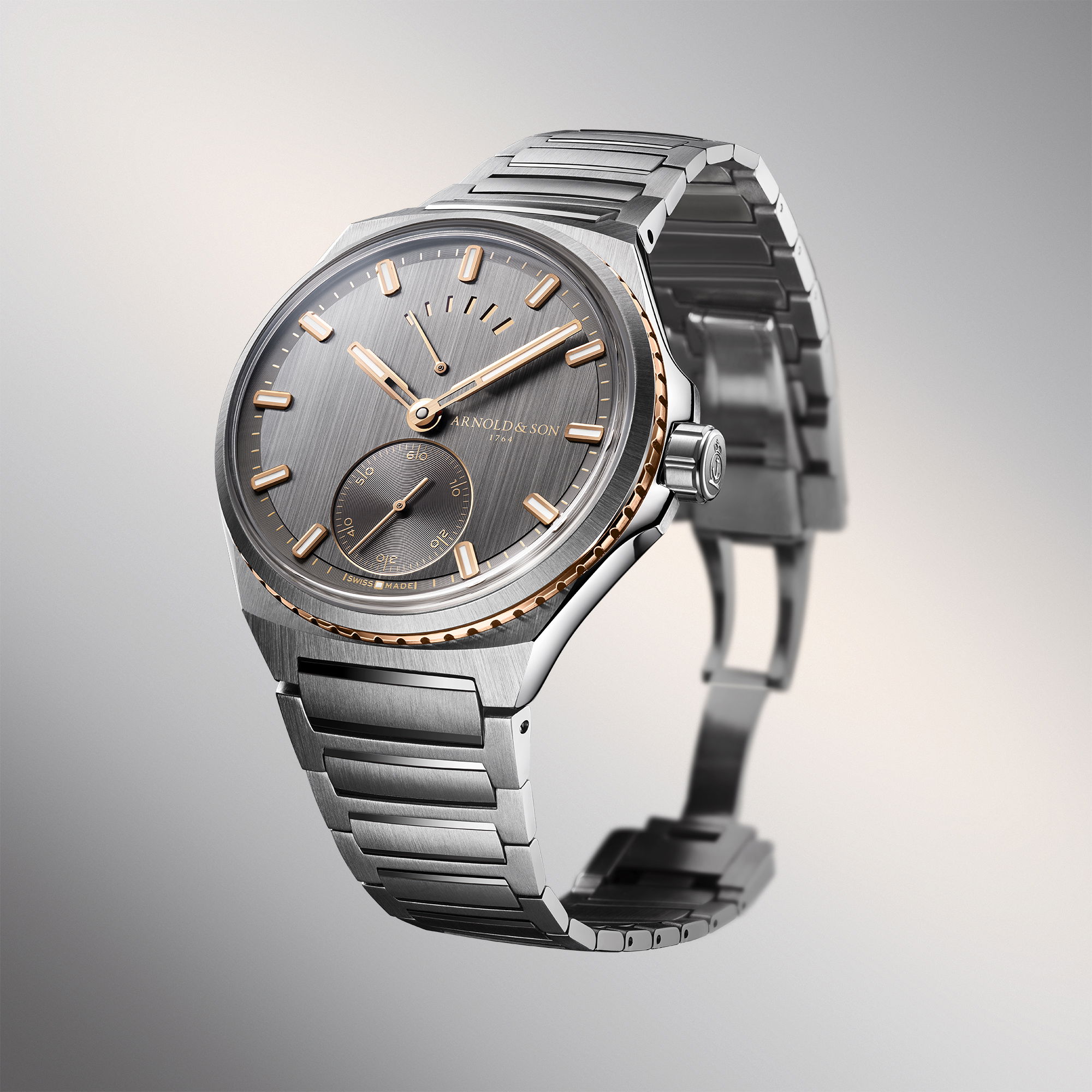
An ocean-grey dial
Around the 49th parallel, the North Atlantic often takes on a metallic grey hue as autumn storms approach. For this limited edition of 38 pieces, the dial of the Longitude 5°W watch imitates this colour in which the sea seems to meet the cloudy sky. To underscore the nautical allusion, Arnold & Son have applied a vertical satin finish to the dial, recalling the rolling waves that sweep across these wind-lashed stretches of ocean. Like a cluster of islands emerging from the mist, a reminder of the Isles of Scilly off Lizard Point, the power reserve indicators are displayed at 12 o’clock. Opposite, the watchmakers have placed the subdial, in which the small seconds hand makes its precise rotation. Restrained and harmonious, the ensemble is traversed by the skeletonised hour and minute hands, which, like the hour markers, are coated with luminescent material to ensure they can be seen in the dark.
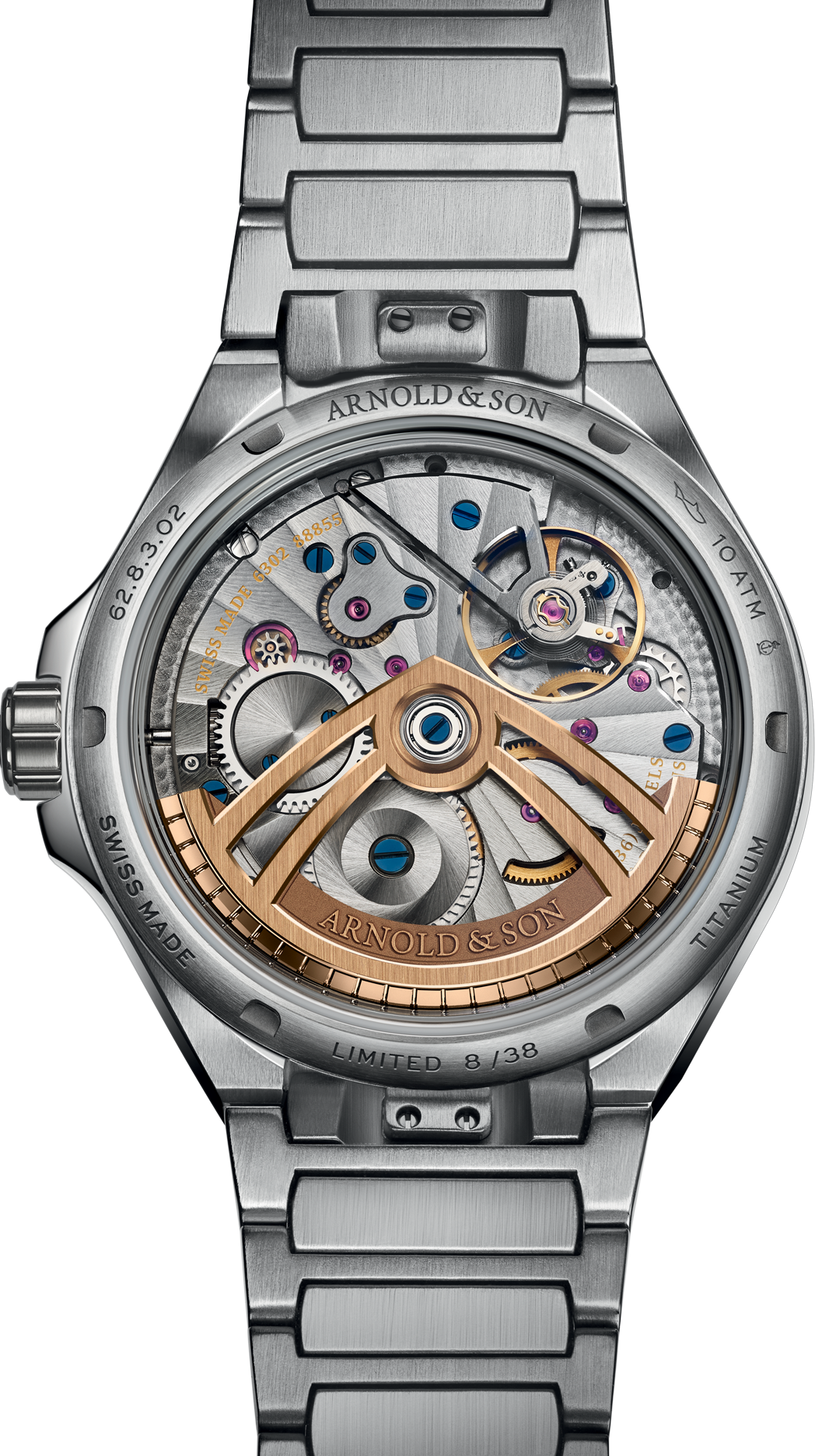
A chronometer’s movement
The Longitude 5°W is driven by a mechanical self-winding calibre with the reference A&S6302. This movement, entirely developed, machined, assembled, finished and adjusted in the Arnold & Son workshops, can be seen through the titanium screw-down case back fitted with a sapphire crystal with an anti-reflective coating. It reveals the palladium-plated bridges, which are polished and chamfered, then adorned with a decorative pattern known as the “Rayons de la Gloire”, radiating from the centre to the rim. In this design, the 22-carat gold oscillating weight features a motif combining the profile of a noble ship with the shape of a sextant, the instrument used by sailors to determine their position in latitude and longitude. In this complex assembly where nothing is left to chance, the visible areas of the main plate are circular grained, the screws with mirror-polished surfaces are blued and chamfered, and the wheels are gilded and rimmed. The ensemble is driven by a Swiss lever escapement, whose balance oscillates at the now-standard rate of 28,800 vibrations per hour (4 Hz) and provides a 60-hour power reserve.














